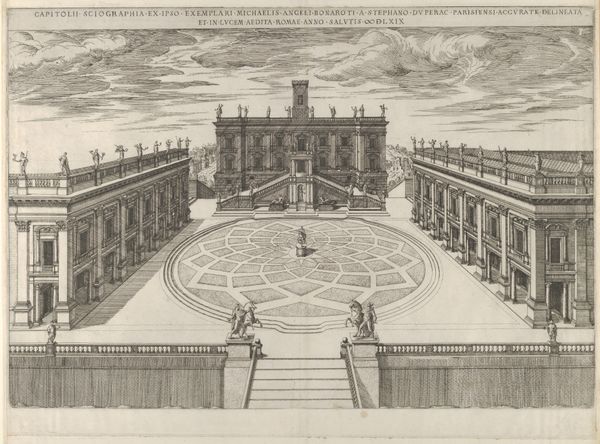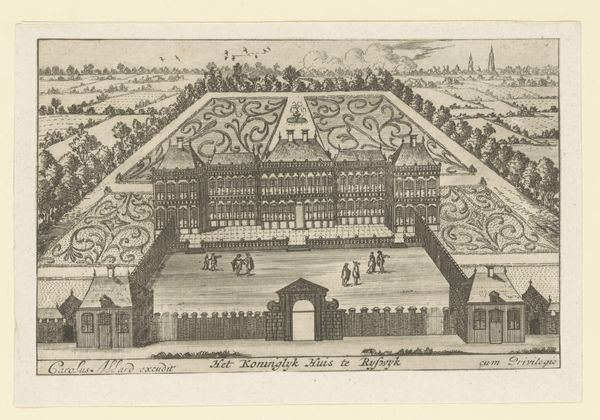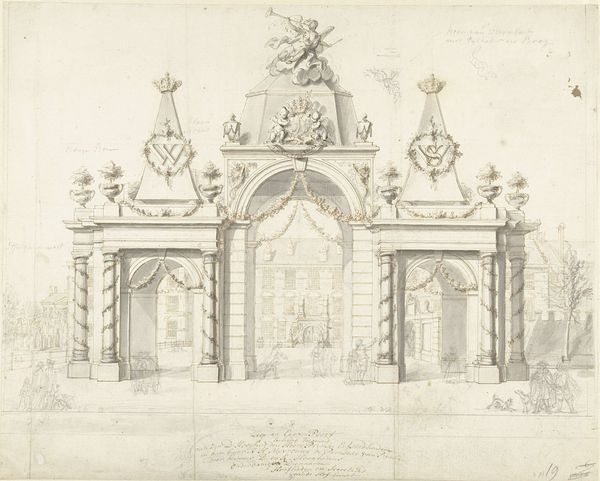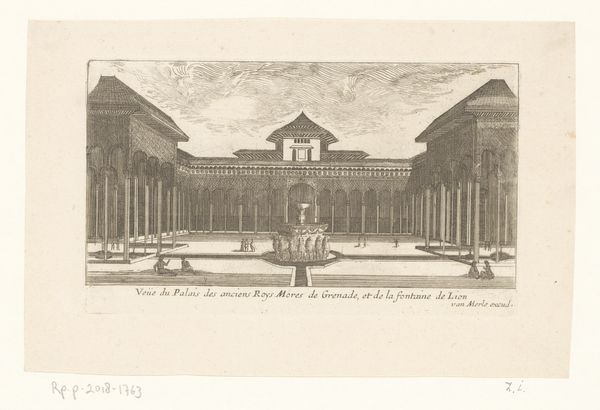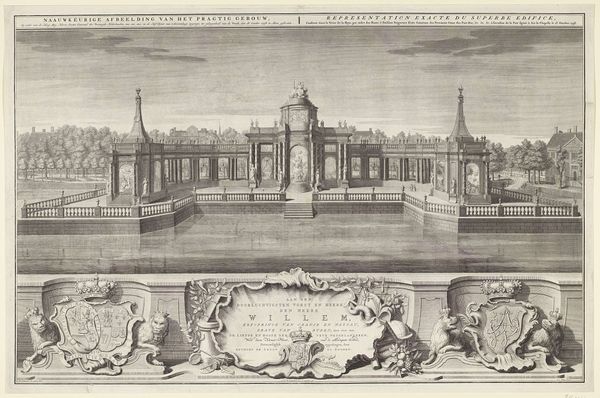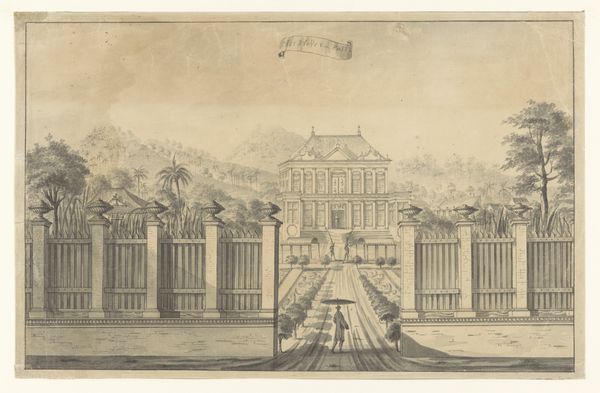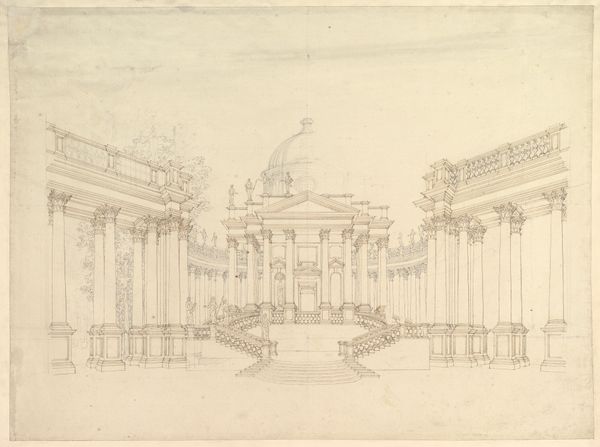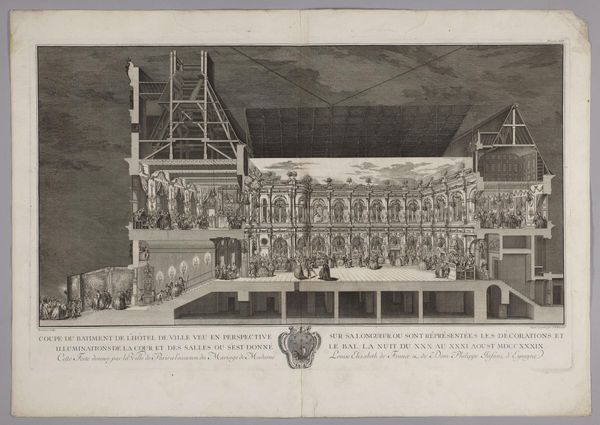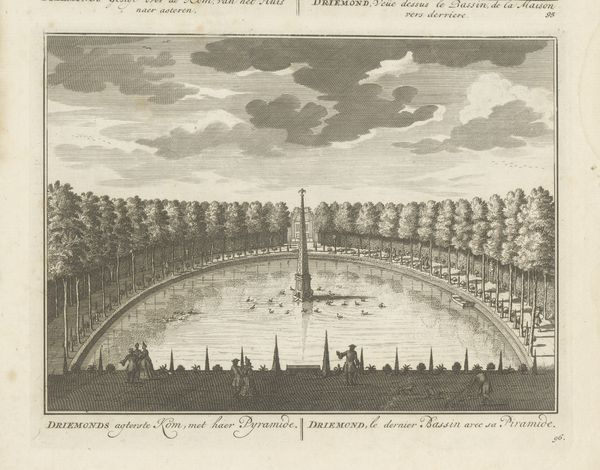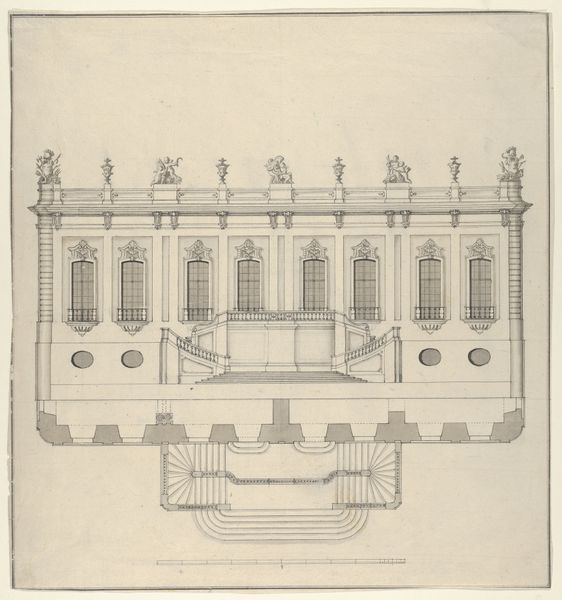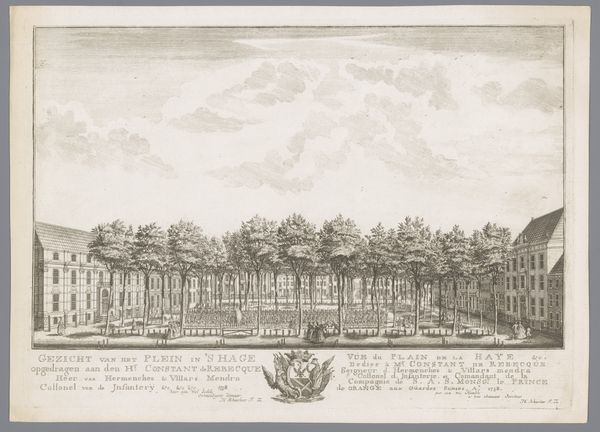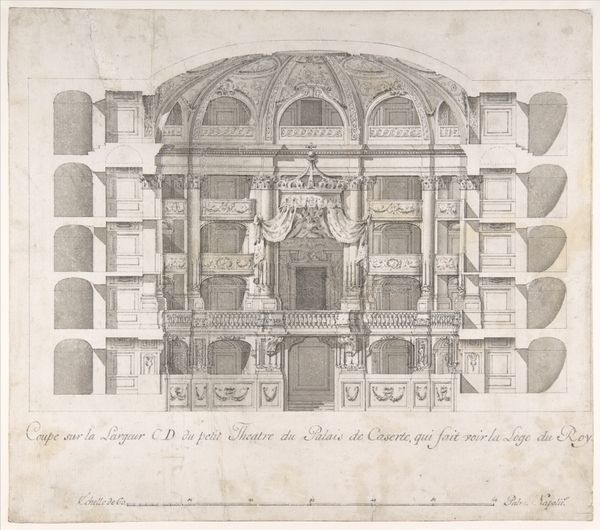
Dimensions: each sheet ca. 30 1/4 x 40 in. (76.8 x 101.6 cm)
Copyright: Public Domain
Curator: We're looking at "Russian Palaces and Gardens," an etching and print by Mikhail Makhaev from 1761. The scene is meticulously rendered in monochrome. Editor: Initially, it evokes a sense of both grandeur and almost clinical precision. The detail in the rendering of the buildings and landscaping suggests an impressive mastery of technique, but the lack of color mutes its vivacity. It feels detached. Curator: Yes, but the technique is central here. Notice how Makhaev uses line and hatching to create depth and texture? The geometric forms are clearly delineated; look at how the shapes create an orchestrated depth, pulling the eye across the landscaped foreground to the distant buildings. There is even implied atmospheric perspective. Editor: I am struck more by the implication of labor here, beyond Makhaev's hand in the printmaking. Imagine the back-breaking labor that would have gone into constructing and maintaining these baroque gardens. And it's important to consider that these manicured landscapes represent concentrated power and privilege. They physically embody hierarchical social structures. Curator: Indeed. The visual rhetoric expresses control. It also reveals something about period aesthetics; the controlled perspectives of the rendering reflect Enlightenment rationality. Editor: Control for some, perhaps. But certainly demanding and difficult physical labor for most to allow for the vision of a select few. The use of printmaking allows for mass reproduction, mass consumption— the creation and consumption of elite landscapes become accessible to more, if only as images. Curator: But consider the symbolism, though. The repetition of geometric forms, for example, reinforces an overall idea of order and structure. This vision would become the foundation for thinking about nation, identity, and progress during the Russian Enlightenment. Editor: For me, the true significance of this image resides less in idealization and more in how these gardens functioned as displays of authority. What materials were moved? Who was tasked with moving them? What did that mean for the consumption of space? Curator: Fair enough. We are still left with this visual expression – carefully constructed through lines and textures. We see a clear demonstration of form dictating function and idea, a testament to the architecture of power translated through the artistic act of etching. Editor: Perhaps we can find agreement in acknowledging the skill that renders such potent symbolism visible, while also remaining cognizant of its foundations.
Comments
No comments
Be the first to comment and join the conversation on the ultimate creative platform.
